If you've been looking for a solution to safely transport your bicycle for your next outdoor adventure, then you're probably torn between a tailgate pad and a bike rack. We have researched and compared the two and will show you what makes one better than the other.
Most people who own a truck choose a tailgate pad over a bike rack because it's designed to be fitted in the tailgate of the truck. Bike racks, on the other hand, are more suitable for sedans and hatchbacks.
When selecting the perfect vehicle accessory that can secure your bike, there are several things to consider. In this article, we'll take a look at the pros and cons of both a bike rack and a tailgate pad. We'll then dive into some of the factors to consider when deciding which of these two to purchase. Keep reading for more information!
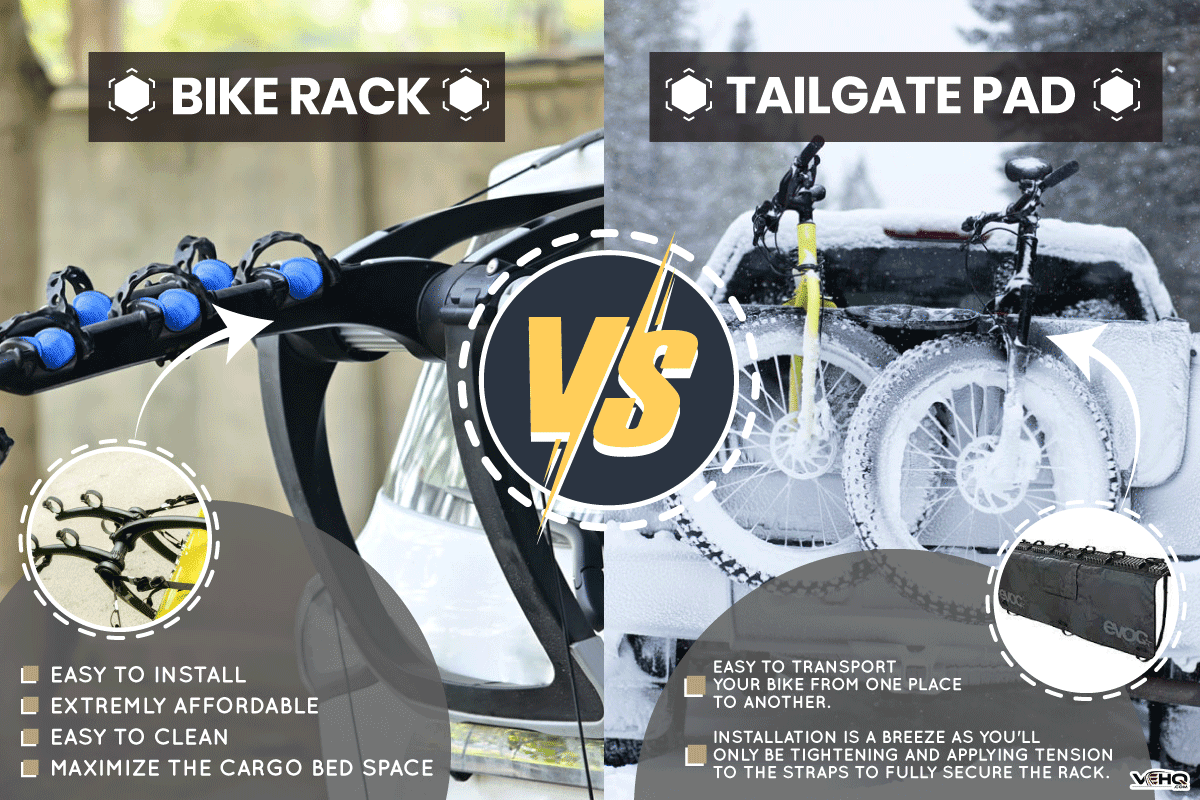
What is a Tailgate Pad?
If you are looking for a way to secure your bike in the back of your truck, then you are going to want to consider getting a tailgate pad. Installation is pretty basic: simply wrap it around the tailgate and you're good to go!
Since tailgate pads are fitted in the tailgate of a truck, it's essential that it should be made of thicker foam and include extra straps to prevent the bike from slipping off.
The foam serves as a cushion that absorbs shocks and protects the bike from rubbing against the tailgate. The straps secure the bike from being tossed around by unexpected road bumps.
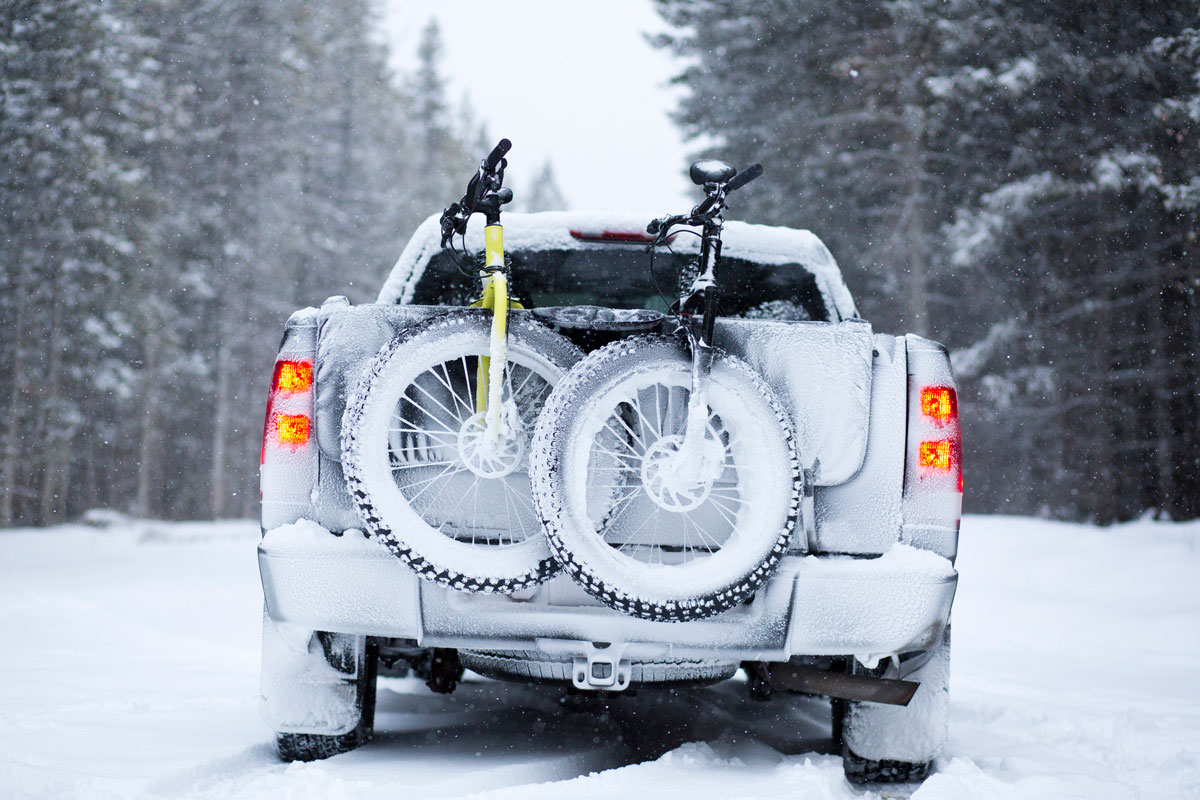
Pros of a tailgate pad
- Easy to install. If you know how a backpack strap mechanism works then installing one will be a breeze for you.
- Extremely affordable. You can get a tailgate pad for less than a hundred bucks and this can already accommodate up to 6 bikes. This makes them one of the most cost-effective ways to safely transport your bike outdoors.
- Easy to clean. The tailgate pad is washable. You can clean the pad by brushing it with soap and water.
- Tailgate pads come in a standard size that fits most tailgates. They also come in different colors and designs.
- Durable. Most tailgate pads are coated with UV protection and made from weather-resistant material.
- Maximizes the cargo bed space. No need to install a bike rack as you'll be utilizing the existing space provided by the cargo bed behind the truck.
Cons
- If you're going out for an adventure and you're bringing lots of stuff with you, you might run out of cargo bed space if your tailgate pad is at full capacity (6 bikes).
Check out this tailgate pad on Amazon.
How to install a tailgate pad
1. Place the pad on the tailgate. The brand name or logo should serve as your guide. You'll know if you're putting it right if the logo is centered and exposed on the pad.
2. Open the tailgate slightly and let the lower straps feed through the bottom and into the cargo bed. Connect them but don't apply tension yet.
3. Adjust the upper straps accordingly. Make sure the bike spacer blocks are aligned with the top of the tailgate in order to maximize space. If you see any extra fabric that needs to be snug, tuck them in.
4. The tailgate pad provides an adjustable window for your camera. The window can be folded so you can customize your adjustment according to your needs.
5. If you're not satisfied with how the tailgate pad is positioned, you can pull it up and down as you would when trying out a new tuxedo.
6. Apply tension to the lower straps starting from the center and moving toward the sides. This will allow you to tighten up the straps evenly and prevent them from being too loose or too tight.
7. You may need to do the "trying out a new tuxedo" thing again to ensure the tailgate pad is sitting flat. Adjust according to preference.
8. Check for slacks in the upper and lower straps and apply tension if necessary. Do not over-tighten.
9. And finally, bundle the top straps into elastic holders.
What is a Bike Rack?
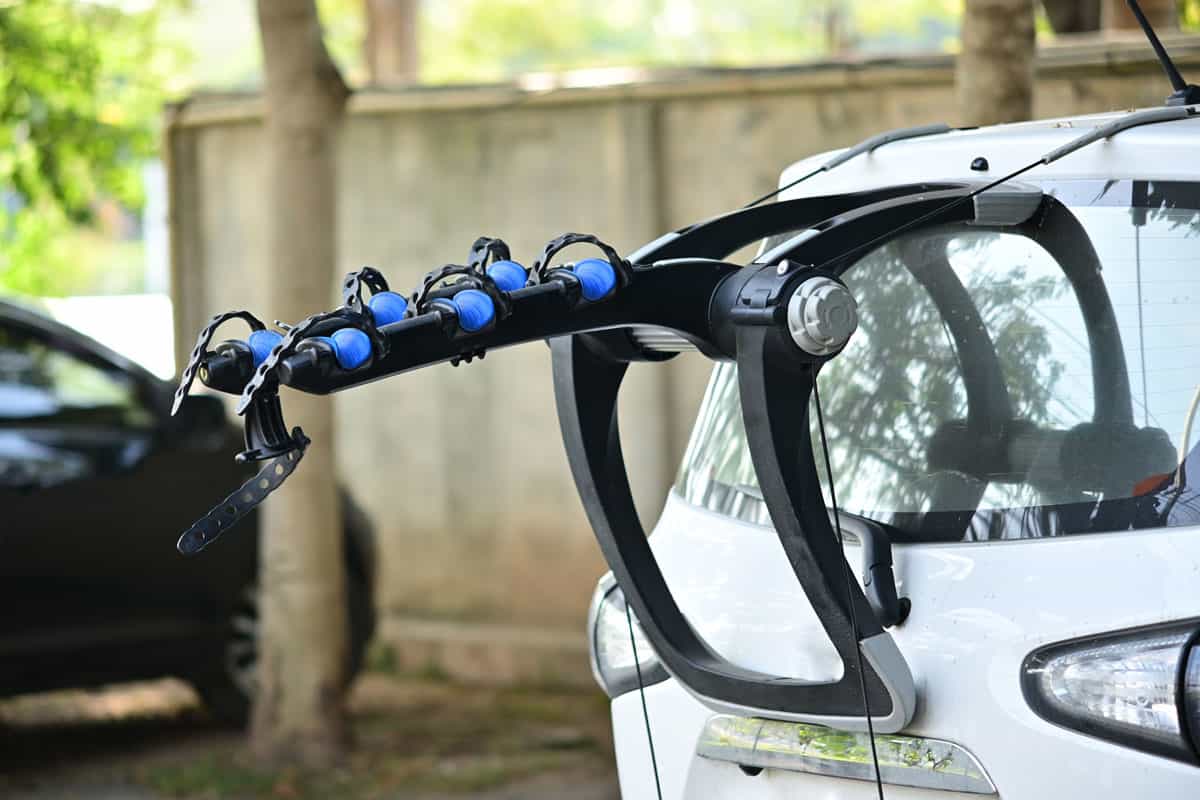
A bike rack is usually made of steel and is attached to the back of a vehicle with straps and metal hooks. Most people use bike racks for cars that don't provide enough space to store a bike, like sedans and hatchbacks. A bike rack, in other words, is a vehicle accessory that serves as an extension to provide storage space for your bike.
Pros of a bike rack
- Upgrades your car into a bike-transporting vehicle without making a major modification. A bike rack makes it easy to transport your bike from one place to another.
- Installation is a breeze as you'll only be tightening and applying tension to the straps to fully secure the rack. No drilling and mounting of bolts whatsoever.
Cons of a bike rack
- Not recommended if your car is too small to accommodate a mountain bike
- The bikes could get in the way and it can be a safety hazard when parking, or even for a car that's behind you since they are extending out.
- There's no guarantee that the bike rack won't fall off while driving. This is because the holding mechanism involves metal hooks whose straps could loosen over time. These metal hooks are attached to the unsecured areas of the vehicle like gaps and corners and driving over a bumpy road may cause them to get displaced.
- Expensive. A bike rack that can hold only two bikes can cost you $300.
Check out this trunk bike rack on Amazon.
How to install a bike rack
Before anything else, make sure you have the right-fit bike rack for your vehicle. This is very important as it can make or break the installation process. The wrong fit can result in an unsafe and potentially dangerous situation.
Bike racks usually don't come out of the box fully assembled. You have to take your time and read all the instructions carefully to make sure you get everything is assembled properly. Once you're done, your rack is ready to be used.
Here are the steps:
1. Make sure you clean the surface of the car where the bike rack is going to make contact. Spray the glass window and the bumper and with a cleaning solution and wipe them off clean and dry.
2. Position the bottom pads on the bumper and adjust the top pads accordingly.
3. Attach the metal hooks of the top straps to the top of the car. Adjust the tension so the bottom pads are snug on top of the bumper. The tension should be tight enough to support the bottom pads.
4. Do the same to the bottom straps. The bottom of the trunk should provide a place where you can hook the bottom straps. You can also find a safe place somewhere in between the tailgate.
5. As for the side straps, make sure you don't hook them to the gap in the turn signal lights as they're made of glass and could break due to the tension of the straps.
Tailgate Pad Vs Bike Rack: Which To Choose?
The type of vehicle that you have determines primarily whether or not you should choose a tailgate pad over a bike rack and vice-versa.
It just doesn't make sense to choose a bike rack over a tailgate pad if you have a truck since a truck already has the necessary space to accommodate your bike. All you need to do is a cushion that will protect the truck's paint from getting scratched.
The only time you'll need a bike rack in your truck is when you'll be using the cargo bed at full capacity and you don't have space for your bike.

Should I Get a Roof Bike Rack or a Trunk Bike Rack?
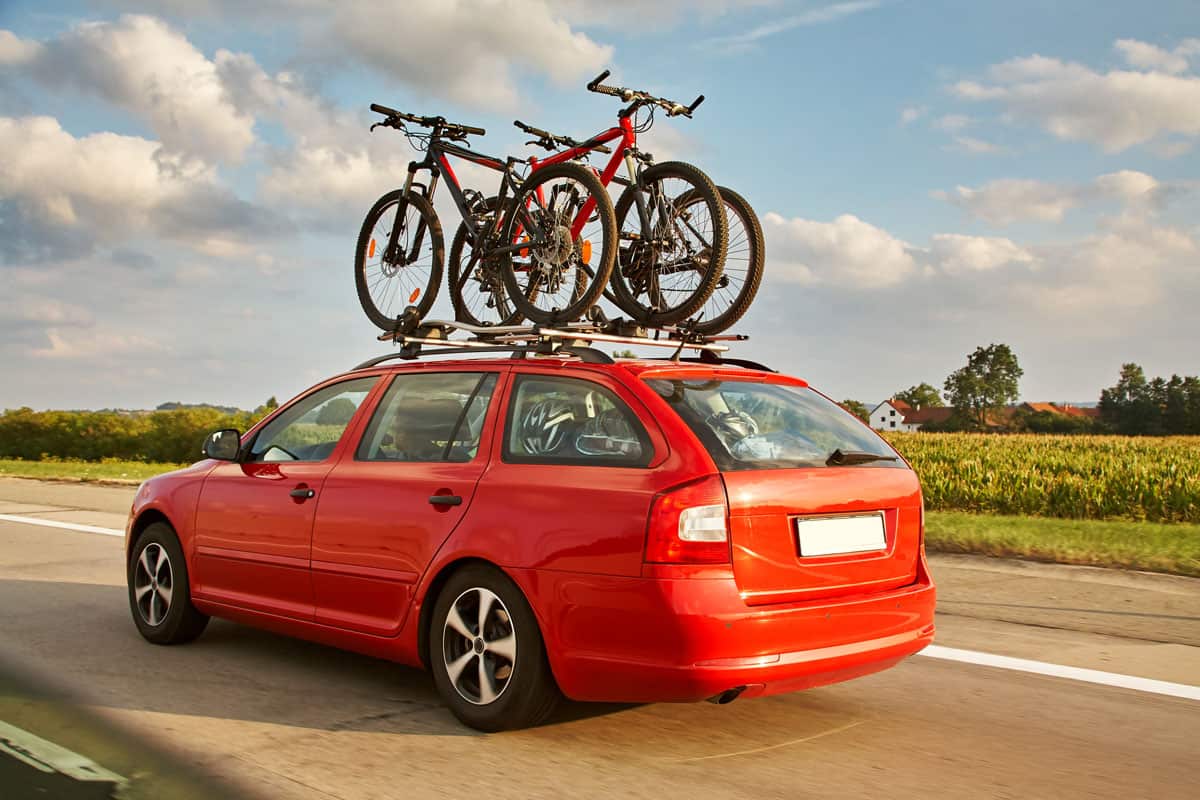
Bicycle racks come in many different designs, styles, and configurations. Some are designed for trunks, some are designed for roofs.
A roof-mounted bike rack is by far the best choice if you want to carry as many as four bikes. It is easy to install and comes with pre-made mounting hardware.
The weight of the bike is carried by the roof rack and does not put additional stress on the vehicle's trunk. Keep in mind that your vehicle's trunk is not designed to hold the weight of a bicycle.
However, the roof bike rack can become difficult to manage. You must climb up to the roof and reach the cargo area to load and unload cargo. This can be a dangerous process, especially for older and physically weak individuals. The height can also be a disadvantage.
The trunk bike rack, on the other hand, does not require any climbing up to the roof. You can attach the bike to the back of a vehicle, making it very accessible. Nevertheless, a roof bike rack offers a much more secure, although not so convenient option, to transport your bicycle, more than a trunk bike rack.
The biggest disadvantage of a trunk bike rack is that it's less secure than a roof-mounted bike rack. This is because the load is being supported by straps that are just hooked to gaps which could be displaced anytime if the straps become slack.
Another disadvantage is that the trunk bike rack takes up too much space. This could give you a hard time maneuvering the vehicle in tight corners. Some trunk bike racks also get in the way, giving you difficulty in accessing your trunk.
Check out this roof-mounted bike rack on Amazon.
Does a Bike Rack Affect a Car's Gas Mileage?
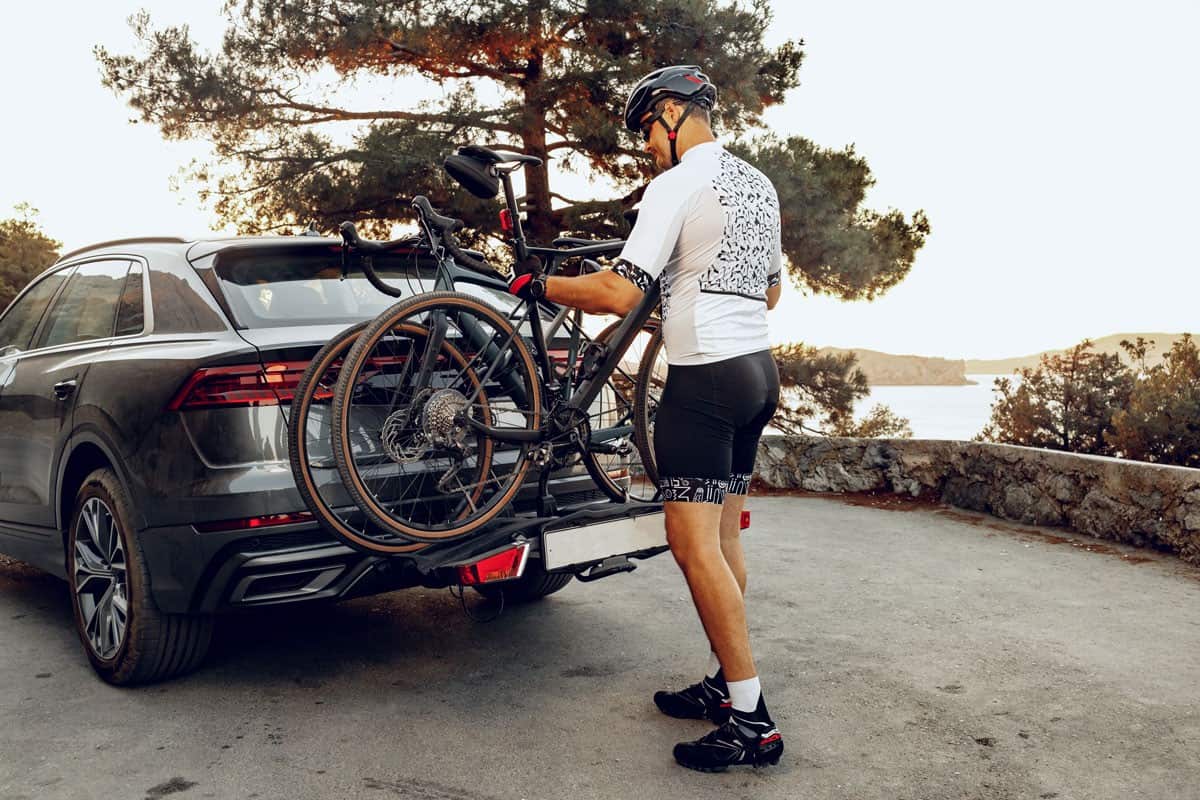
Do you worry about the extra weight of a bike rack? You may want to consider this one day while you’re on the road. When you factor in all of the additional weight, you may find that your bike rack can increase your fuel usage. According to Consumer Reports, a fully loaded bike rack can increase your fuel consumption by up to 28%.
In Closing

It's obvious that there's a difference between a tailgate pad and a bike rack. Both accessories may serve the same purpose, but the comparison that we've provided should help you see what makes one different from the other. This way, you can decide what's best for you.
We've also taken a look at what factors influence the design choices of both a tailgate pad and a bike rack. In general, people should take into consideration the type of vehicle they own before deciding whether or not they will purchase a bike rack or a tailgate pad.
You might also like:
How To Remove Bike Rack From Car [Inc. Thule, Yakima, And Allen]



